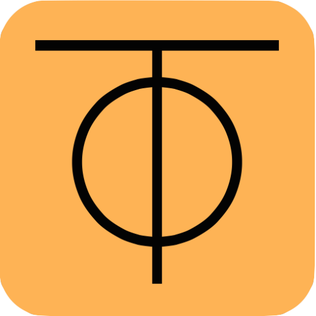
Kodi is a free and open-source media player and technology convergence software application developed by the Kodi Foundation, a non-profit technology consortium. Kodi is available for multiple operating systems and hardware platforms, with a software 10-foot user interface for use with televisions and remote controls. It allows users to play and view most streaming media, such as videos, music, podcasts, and videos from the Internet, as well as all common digital media files from local and network storage media, or TV gateway viewer.

A home theater PC (HTPC) or media center computer is a convergent device that combines some or all the capabilities of a personal computer with a software application that focuses on video, photo, audio playback, and sometimes video recording functionality. Since the mid-2000s, other types of consumer electronics, including game consoles and dedicated media devices, have crossed over to manage video and music content. The term "media center" also refers to specialized application software designed to run on standard personal computers.

SageTV Media Center, now open source, was a proprietary, commercial DVR and HTPC software for Mac OS X, Windows and Linux. It requires that the host computer have a hardware-based TV tuner card. The SageTV software has an integrated Electronic Programming Guide (EPG) that is updated via the Internet. The program provides a television interface for DVR, music, and photos on Windows and Linux. SageTV Media Center typically records in standard MPEG2, making it possible to transfer recordings to laptops or other devices. It also has a built-in conversion feature to transcode files into other formats compatible with iPod, PSP, cell phones and other portable devices.
A home server is a computing server located in a private computing residence providing services to other devices inside or outside the household through a home network or the Internet. Such services may include file and printer serving, media center serving, home automation control, web serving, web caching, file sharing and synchronization, video surveillance and digital video recorder, calendar and contact sharing and synchronization, account authentication, and backup services. In the recent times, it has become very common to run hundreds of applications as containers, isolated from the host operating system.
This is a comparison of digital video recorder (DVR), also known as personal video recorder (PVR), software packages. Note: this is may be considered a comparison of DVB software, not all listed packages have recording capabilities.
A mobile operating system is an operating system used for smartphones, tablets, smartwatches, smartglasses, or other non-laptop personal mobile computing devices. While computers such as typical/mobile laptops are "mobile", the operating systems used on them are usually not considered mobile, as they were originally designed for desktop computers that historically did not have or need specific mobile features. This "fine line" distinguishing mobile and other forms has become blurred in recent years, due to the fact that newer devices have become smaller and more mobile, unlike the hardware of the past. Key notabilities blurring this line are the introduction of tablet computers, light laptops, and the hybridization of the two in 2-in-1 PCs.

Plex Inc. is an American software company that runs its namesake ad-supported streaming media service that provides television shows and movies to users worldwide, and further provides a platform to discuss and discover content across all major subscription streaming services. Plex also develops media server software and a series of apps that enables users to stream their personal media collections from their servers to their various devices. Plex Inc. is based in Campbell, California.
HTTP Live Streaming is an HTTP-based adaptive bitrate streaming communications protocol developed by Apple Inc. and released in 2009. Support for the protocol is widespread in media players, web browsers, mobile devices, and streaming media servers. As of 2022, an annual video industry survey has consistently found it to be the most popular streaming format.

A smart TV, also known as a connected TV (CTV), is a traditional television set with integrated Internet and interactive Web 2.0 features that allow users to stream music and videos, browse the internet, and view photos. Smart TVs are a technological convergence of computers, televisions, and digital media players. Besides the traditional functions of television sets provided through traditional broadcasting media, these devices can provide access to over-the-top media services such as streaming television and internet radio, along with home networking access.

AirPlay is a proprietary wireless communication protocol stack/suite developed by Apple Inc. that allows the streaming of multimedia and device screens, together with related metadata, between compatible devices. Originally implemented only in Apple's own software and hardware, the company has since licensed the AirPlay protocol stack to third-party manufacturers and it has been implemented on devices such as television sets and home audio systems. AirPlay works through either a direct peer-to-peer connection between devices or through an infrastructure local network.
Dynamic Adaptive Streaming over HTTP (DASH), also known as MPEG-DASH, is an adaptive bitrate streaming technique that enables high quality streaming of media content over the Internet delivered from conventional HTTP web servers. Similar to Apple's HTTP Live Streaming (HLS) solution, MPEG-DASH works by breaking the content into a sequence of small segments, which are served over HTTP. An early HTTP web server based streaming system called SProxy was developed and deployed in the Hewlett Packard Laboratories in 2006. It showed how to use HTTP range requests to break the content into small segments. SProxy shows the effectiveness of segment based streaming, gaining best Internet penetration due to the wide deployment of firewalls, and reducing the unnecessary traffic transmission if a user chooses to terminate the streaming session earlier before reaching the end. Each segment contains a short interval of playback time of content that is potentially many hours in duration, such as a movie or the live broadcast of a sport event. The content is made available at a variety of different bit rates, i.e., alternative segments encoded at different bit rates covering aligned short intervals of playback time. While the content is being played back by an MPEG-DASH client, the client uses a bit rate adaptation (ABR) algorithm to automatically select the segment with the highest bit rate possible that can be downloaded in time for playback without causing stalls or re-buffering events in the playback. The current MPEG-DASH reference client dash.js offers both buffer-based (BOLA) and hybrid (DYNAMIC) bit rate adaptation algorithms. Thus, an MPEG-DASH client can seamlessly adapt to changing network conditions and provide high quality playback with few stalls or re-buffering events.
Miracast is a wireless communications standard created by the Wi-Fi Alliance which is designed to transmit video and sound from devices to display receivers. It uses Wi-Fi Direct to create an ad hoc encrypted wireless connection and can roughly be described as "HDMI over Wi-Fi", replacing cables in favor of wireless. Miracast is utilised in many devices and is used or branded under various names by different manufacturers, including Smart View, SmartShare, screen mirroring, Cast and Connect, wireless display and screen casting.

ZeroTier, Inc. is a software company with a freemium business model based in Irvine, California. ZeroTier provides proprietary software, SDKs and commercial products and services to create and manage virtual software-defined networks. The company's flagship end-user product ZeroTier One is a client application that enables devices such as PCs, phones, servers and embedded devices to securely connect to peer-to-peer virtual networks.

Jellyfin is a free and open-source media server and suite of multimedia applications designed to organize, manage, and share digital media files to networked devices. Jellyfin consists of a server application installed on a machine running Microsoft Windows, macOS, Linux or in a Docker container, and another application running on a client device such as a smartphone, tablet, smart TV, streaming media player, game console or in a web browser. Jellyfin also can serve media to DLNA and Chromecast-enabled devices. It is a fork of Emby.

The Roku OS is an operating system software developed by Roku Inc. It has powered consumer electronics products such as Roku-branded streaming players and smart TVs since 2004. The operating system leads the U.S. smart TV sector and reports 70 million users, as of 2023.








